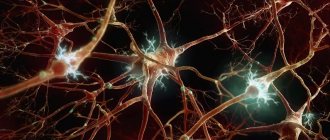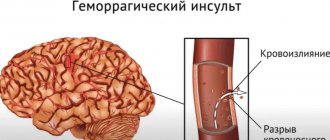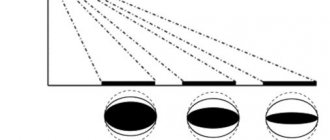Diseases that begin with the letter “N”: Narcolepsy, Drug addiction, Corns, Neuralgia, Sciatic nerve neuralgia, Trigeminal neuralgia, Neurasthenia, Neuritis, Neurosis, Miscarriage, Urinary incontinence, Neurodermatitis, Neurosyphilis, Neurocirculatory dystonia, Lactose intolerance, Nephritis, Nephroptosis (wandering kidney, prolapsed kidney).
Mental and physical stress that lasts for a long time does not benefit anyone and can cause the development of neurasthenia. This disease refers to a dysfunction of the central nervous system. Neurasthenia is a type of neurosis. The result of the disease is depletion of the human nervous system. Lack of treatment provokes the development of a chronic form of the disease.
In medicine, neurasthenia is divided into the following types:
- hypersthenic;
- hyposthenic;
- sexual
A representative of any gender can “earn” neurasthenia. However, men are slightly more susceptible to this diagnosis. The age category of the disease is between 20-40 years.
Signs of the development of neurasthenia
Depending on the type of neurasthenic disorder, groups of symptoms differ. Common manifestations of the disease include:
- insomnia;
- headaches and dizziness occur in the evening, before bedtime;
- feeling of intracranial pressure;
- decreased sexual desire;
- pain in the heart area (aching or stabbing);
- rapid pulse;
- tremor of the limbs;
- high blood pressure;
- redness or pale skin;
- excessive sweating;
- problems with the gastrointestinal tract: heartburn, belching, lack of appetite, constipation or diarrhea;
- a stressful situation can cause frequent urge to go to the toilet;
- premature ejaculation.
Manifestations of the hypersthenic form are as follows:
- irritability;
- severe agitation;
- uncontrolled expression of emotions;
- difficulty concentrating;
- memory loss;
- Any little thing can cause irritation: noise, loud conversation, someone else's laughter;
- low performance;
- problems falling asleep and frequent awakenings;
- frequent nightmares.
In the second stage, this type of neurasthenia is manifested by excessive irritability. Absolutely any little thing excites a person and he is capable of screaming. After irritation, the patient experiences weakness and devastation, which can end in crying. All this leads to nervous exhaustion, inability to concentrate on work and memory impairment.
The hypersthenic form of the disease is more characteristic of people with a phlegmatic or choleric temperament.
With the hyposthenic form of neurasthenia, the following symptoms are observed:
- lethargy;
- constant bad mood;
- tearfulness;
- lack of interest and desire to do anything, apathy.
The hyposthenic form is characteristic of people with a melancholic temperament and increased levels of anxiety.
Sexual neurasthenia interferes with the flow of normal sexual life and manifests itself as follows:
- increased fatigue;
- complete or partial absence of erection;
- premature ejaculation;
- decreased sexual desire;
- pain in the lumbosacral region;
- absence of orgasm or its weak expression.
Neurasthenia in children
The diagnosis of “neurasthenia” is quite common in pediatric patients. A child's reaction to external factors differs from the reaction of an adult. Children perceive the environment differently. Childhood neurasthenia can manifest itself in infancy. The doctor makes a diagnosis based on the complaints of the baby and his parents, and collects a general medical history of the child.
The following signs may be a reason to contact a pediatric neurologist:
- early refusal to sleep during the day;
- disturbances in night sleep, frequent awakenings and crying;
- increased activity, fussiness and agitation;
- lack of appetite in the presence of irritations (teething, colic, problems with the toilet).
In preschool and adolescence, the following symptoms appear:
- hot temper and vivid display of emotions;
- frequent headaches;
- increased excitability;
- inability to concentrate;
- excessive fatigue during physical and mental stress;
- problems with bowel movements.
Childhood neurasthenia is divided into:
- hypersthenic, expressed in active, noisy and emotional behavior;
- asthenic, manifested in fearfulness, tearfulness and constant weakness.
In the absence of treatment and psychological help, in the future the child may have problems with social adaptation in society, in building personal relationships and possible manifestations of depression.
DIAGNOSTICS
Diagnosis of asthenoneurosis is carried out using methods such as:
- Interviewing the patient, collecting anamnesis. Identification of factors that provoked the disease. Comparison of data from a psychiatrist, neurologist and therapist.
- Diagnosis of the condition of the patient’s internal organs using EEG, ECG, computer technology, radiography and ultrasound. Assessing the patient's reaction to bright light and various sounds. Assessment of the safety of reflex activity. Correlation of the current state of mental development of the patient with the average indicators of the age norm.
- Laboratory diagnostics. A general blood test and biochemical examination of a blood sample can exclude the presence of various infectious, immunological, and hematological diseases in the patient.
- Psychological diagnostics. Assessment of the level of voluntary attention, memory, identification of features of logical thinking. As a rule, in patients with asthenoneurosis, signs of fatigue appear after 10–15 minutes of examination.
The final diagnosis is made based on a comprehensive analysis of information about the patient and clinical symptoms. In some cases, consultation with related specialists is required to determine the patient’s neurological status.
Diagnostic methods for determining the disease
When the first signs of neurasthenia appear, you should seek medical help from a neurologist. To prescribe treatment, it is not enough to know the diagnosis; it is necessary to find and identify the cause of the disease, as well as exclude the presence of chronic and somatic diseases. For this purpose, certain diagnostic methods are prescribed depending on the suspected cause of the development of neurasthenia.
If there is a suspicion of brain damage, the patient is prescribed a magnetic resonance or computed tomography scan or rheoencephalography.
Neurasthenia occurs in people prone to anxiety and instability
Three factors are involved in the occurrence of neurasthenia: biological predisposition, personal characteristics and traumatic circumstances.
Genetic predisposition and/or physiological characteristics of the nervous system are formed during conception, pregnancy and early childhood.
Personal characteristics include increased anxiety and sensitivity, emotional instability, impatience, impulsiveness, high demands, and lack of adaptive coping strategies. The “portrait” of a person who is predisposed to the development of neurasthenia may include the following characteristics: impressionable, intolerant of frustration, disorganized, acutely sensitive to non-recognition of oneself and the products of one’s activities.
Exhaustion of the nervous system occurs due to overwork, disruption of sleep and rest patterns, long-term and/or severe illness, excessive intensity of work or academic activity. Chronic or extremely severe stress contributes: acute conflicts, frustration, significant life changes, hard work, unfavorable living conditions, being in danger.
Treatment options
When contacting a neurologist, the patient's history and symptoms will be examined. It is important to find the factor that provoked the development of the disease and eliminate it. After this, the doctor will decide on a treatment regimen, prescribe the necessary medications and provide recommendations.
The main treatment recommendations are:
- normalization of the daily routine (sleep at least 8 hours a day, eat 4-5 times);
- reduction of mental stress.
The following medications may be prescribed to treat neurasthenia:
- tranquilizers (for example, Grandaxin);
- taking B vitamins;
- medications that provide additional nutrition to the brain (“Actovegin”);
- antioxidants (Mexidol);
- products that strengthen the body’s defenses (medicines containing iron);
- drugs to normalize sleep (“Phenazepam”);
- tincture of hawthorn or valerian;
- taking tonics (ginseng, Chinese lemongrass).
It is important to understand that long-term use of psychotropic medications can cause dependence and increase symptoms.
In addition, the patient may be prescribed physiotherapeutic treatment. A course of massage and aromatherapy has a positive effect.
It is also useful to visit a psychotherapist, listen to auto-training and use the feedback method.
The following methods are used to treat neurasthenia in a child:
- a change of scenery and a vacation;
- drinking teas with soothing herbs;
- taking relaxing baths;
- parents need to avoid conflict situations in the family in the presence of the child;
- moderate physical activity, sports and proper rest.
In addition to medicinal methods, folk remedies are very popular. For example, you can use decoctions of valerian root or motherwort, oregano, strawberries, rose hips and raspberries.
MY RECOMMENDATIONS
Children facing neurotic disorders need sessions with a psychologist. The duration of the course is 3–6 months. This is necessary to develop adequate self-esteem in children and prevent relapse of the disease.
Children with asthenia need to be taught the rules of interpersonal interaction and group work. Therefore, during psychological rehabilitation, both individual classes and group trainings are conducted.
Art therapy classes help children find hobbies. Having gained the opportunity for self-realization, children find something to do - creativity has a healing effect on them.
You can strengthen family relationships and normalize the psychological climate at home through joint leisure time between children and parents, visiting the theater and cinema. However, when organizing meaningful leisure time, you should remember that an excess of vivid impressions is also a load on the nervous system, which may be too much for an exhausted body.
Consequences of the disease
The consequences of neurasthenia can be the following diseases and abnormalities:
- prostatitis;
- digestive disorders;
- chronic diseases worsen;
- severe sleep problems;
- dysbacteriosis;
- herpes;
- decline in hemoglobin levels;
- skin diseases develop (neurodermatitis, psoriasis);
- severe memory impairment.
What other neuroses are there?
According to world statistics, 15 to 25% of children, mostly males, suffer from various neuroses. Age range - from one and a half years to adulthood.
Neurasthenia is far from the only nervous system disorder that affects people at an early age. There are quite a large number of neuroses, the symptoms and signs of which are similar, but there are also fundamental differences.
Preschool children and adolescents may be susceptible to types of nervous disorders such as:
- fear neurosis - the patient begins to panic fear of darkness, fire, loneliness, death, etc.;
- hysteria - most often manifests itself in childhood in the form of screams, crying, falling to the floor;
- Hypochondria is more common in teenagers. Morbid fear for one’s health, inventing non-existent diseases;
- obsessive movement neurosis - various phobias are accompanied by nervous tics: blinking, shrugging shoulders, licking lips, etc.;
- depressive neurosis – depression, desire for solitude;
- logoneurosis - stuttering, occurs due to muscle spasms of the speech apparatus;
- Enuresis – involuntary urination;
- somnambulism – sleep disorder, sleepwalking, nightmares;
- Anorexia is a neurotic eating disorder.
As already mentioned, unfortunately, not all parents believe that neurasthenia developing in children and adolescents can pose a serious threat to health. Some think that these are temporary age-related difficulties or whims, others do not notice any changes in the child’s behavior at all.
Prevention of neurasthenia
Neurasthenia, like many mental illnesses, is amenable to preventive measures:
- relax in stressful situations;
- observe the alternation of rest and work time, avoid heavy mental and physical overload;
- turning to doctors for medical help (neurologist, therapist, physiotherapist, psychotherapist);
- going on vacation or a change of scenery;
- sleep at least 8 hours a day;
- take vitamin complexes.
Signs of neurasthenia cannot be ignored, especially for children. Lack of treatment has a negative impact on the patient’s general condition and well-being, as well as social adaptation and relationships in society.
How can parents help?
According to statistics, about 30% of people have experienced a similar condition at least once in their lives, and some may be experiencing it now. But what does this have to do with parents? You can’t let your child not go to school?! The child needs to develop diversified, which is helped by the sections! The child needs to be able to resolve conflicts on his own! And how then can we pull a child out of the vicious circle of problems if we cannot remove all this from his life?
To begin with, you should give your child love and support, and treat his problems and needs with understanding. They may look stupid though. Well, yes. We understand that love for a classmate will pass in a couple of years and this problem will soon go away, but while it is there, it is real for the child.
Then you should rid the child of overprotection - which will make him more independent and allow him to quickly learn to solve his problems. If you think that you simply love and care for your child, then look at your actions through the prism of one simple expression that distinguishes between love and overprotection: “everything that a child should be able to do at his age, he should do himself.” Does your 7 year old child have trouble tying his shoelaces? Hardly! Then let him handle it on his own.
The next step is to return the child’s right to childhood. School, clubs, sections, household chores - this is all good and correct, but the child must have a childhood. There should be time for games, for relaxation, for friends. A child should not always be exhausted from trying to please his parents. Otherwise, he will cause a lot of difficulties for you, and then, if you are lucky, as an adult he will be able to allow himself to live his own life, which most often happens after a long work with a psychotherapist.









